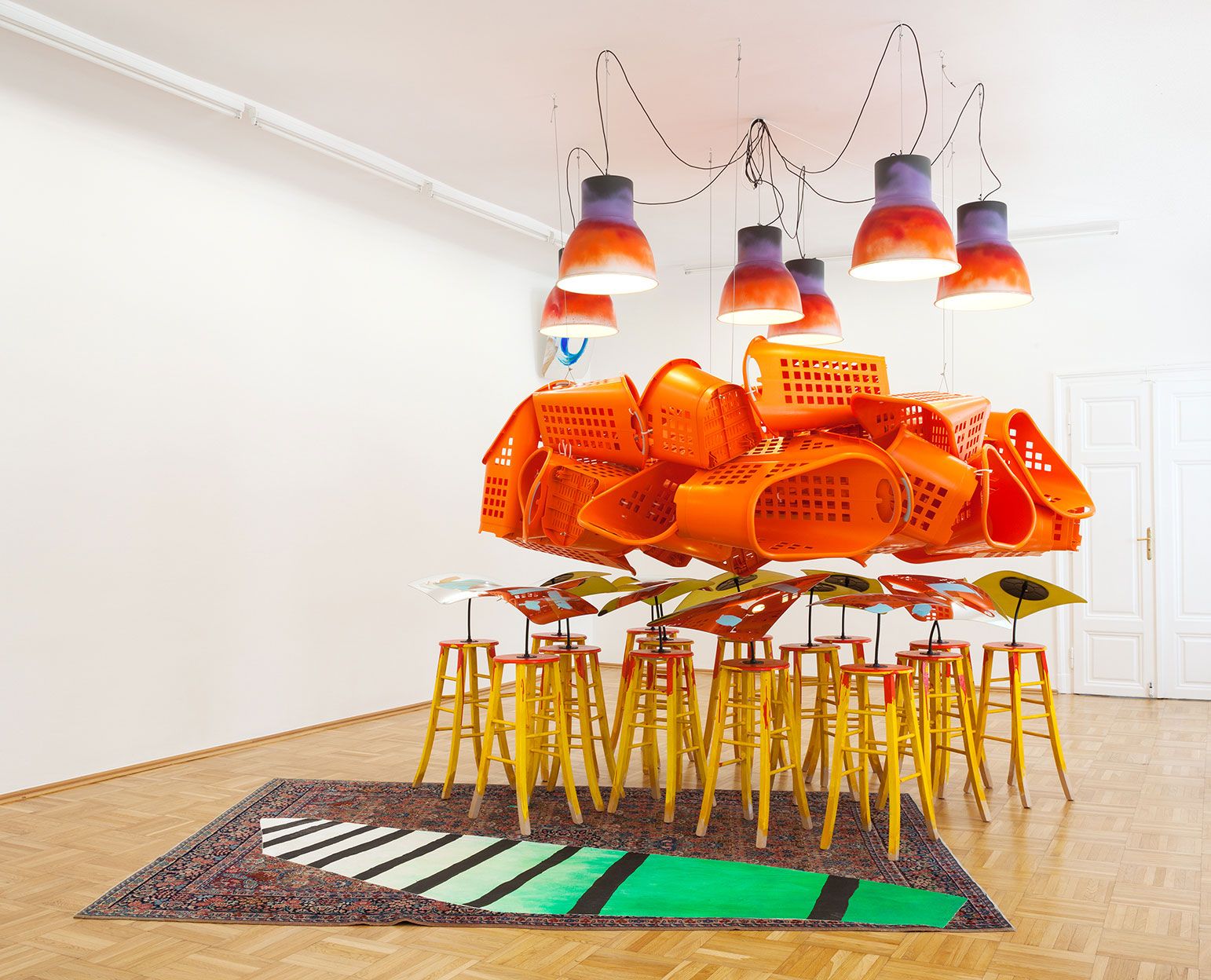This week, our class met with artist Jessica Stockholder! Stockholder is primarily an installation artist, creating sculptural pieces made of found objects that are often attached to the architecture of the gallery space or installation site. While it may not be immediately apparent as her works are made from these mass-produced, synthetic materials, there’s something touchingly human about many of her pieces as the objects often rely on each other for support such as in her “assist” pieces. In these works, objects may be tied or attached to one another in extremely fragile setups, providing a symbiotic relationship where they support each other, but if one object is moved the entire work falls apart. Through these cold, detached objects, her works speak to me about the complex relationships between humans, in which we need each other and prop one another up, but these relationships can always teeter on destruction.

Before we actually met with Stockholder, I read in an interview her thoughts on beauty, which these works embody: “I don’t worry about defining it; I experience it. And it shifts. For me, it has something to do with struggle. Things that are beautiful are beautiful because they are difficult. It has something to do with stretching and expanding what I know.” I think the word “struggle” perfectly summarizes what beauty should mean. Even something as cliche as a rose, a widely-recognized symbol of beauty, can contain many conflicting ideas such as life versus death and the ephemeral nature of beauty itself.
As for the meeting itself, Stockholder was well-spoken and provided very interesting responses to the questions. She was brutally honest (not in a rude way!) and almost shot down some of the questions asked. She didn’t specifically say this, but I think it could be her way of challenging misconceptions about her artwork. One of the biggest shocks and takeaways from this meeting was her need to supplement her art practices with teaching. This in itself is normal for many artists, but it was surprising to hear and in some ways disheartening that such a big player in the art world, with many accolades and shows, can also have problems making money in the art world. I’m also a bit surprised that many artists with teaching jobs that we’ve met with such as herself and Kenny didn’t go into the field with education in mind. Without having taken classes with them obviously, I think they would all make great professors, but I suppose I always had a misconception that most professors/teachers go into education because of want rather than need.
Lastly, our class got into an interesting discussion about her use of plastics and non-biodegradable materials. Some were upset, seeing this as a contribution to the large-scale pollution and degradation of the environment, while she saw her works as partly a commentary on the inescapable nature of these materials in our daily lives. While I definitely see why people could be upset by this, I saw her works as at least recycling these materials rather than releasing them into the environment as they undoubtedly otherwise would have been. Not only this, but I agree that plastics and similar materials are almost impossible to avoid, especially to the working class, and the blame should be shifted from individuals to the large corporations producing these materials.
